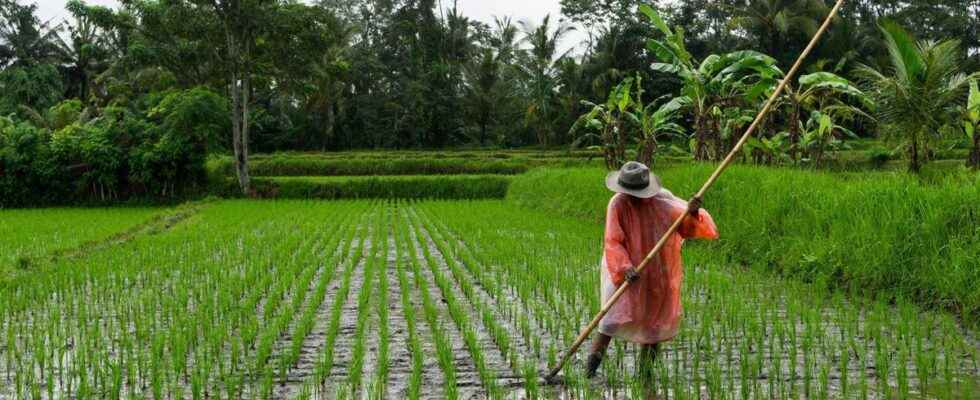Published on
Updated
Reading 2 mins.
According to an English study, genetically modified rice could be a serious way to fight food shortages caused by climate change. Genetic modifications would allow rice to continue to grow in conditions that are becoming increasingly difficult due to climate change.
New research from the University of Sheffield in England, published in the journal New Phytologistreveals that by genetically modifying rice, it could grow equally effectively in different countries and environments, despite different consequences of climate change, such as rising temperatures or rising sea levels.
According to the Sheffield researchers, reducing the number of stomata in rice would make it more resistant to salt water. The stomata are small orifices that allow gas exchange between the plant and the surrounding air. The discovery comes as rising sea levels due to climate change allow salt water to penetrate further inland and destroy crops that cannot tolerate the increased salinity, including rice.
Today, rice is arguably the most important food crop on earth – 3.5 billion people consume it every day, and 30% of the world’s freshwater reserves are used for its cultivation. “Rice is a hugely important food crop, eaten daily by more than half of the world’s population. Ensuring it can survive harsher conditions caused by climate change will be key to feeding a growing population that is expected to reach 10 billion people in 60 years,” said study lead author Dr. Robert Caine in a statement. from the University of Sheffield.
In previous research, Sheffield scientists had already noticed that rice with fewer stomata was more drought resistant and required up to 40% less water to grow. But reducing the stomata of the crop alone would not solve the problems. The researchers also found that reducing the number and size of stomata can make rice more difficult to grow in extremely hot temperatures. Therefore, to ensure that rice can grow as much as possible in different countries and environments, different additional modifications will need to be made.
“Our results reveal how rice can be modified to grow as efficiently as possible in different climates – rice varieties that have fewer stomata can survive with less water and in places with salty water. time, natural rice varieties with fewer and larger stomata are able to thrive in warmer temperatures,” says Dr Robert Caine.
The year 2022 has been marked by several agricultural disasters around the world. Rice crops were particularly affected by drought and floods. Last summer, floods linked to the exceptional monsoon in Pakistan destroyed 250,000 tonnes of rice. According to the Syndicat de la Rizierie Française (SRF), a global shortage of rice is possible at the beginning of 2023. Difficulties could arise “from February / March, when the new harvests arrive”, predicts Thierry Lievin, president of the SRF to the media BFM TV. “If there are no complete disruptions, there will at least be severe supply disruptions,” he warns.
